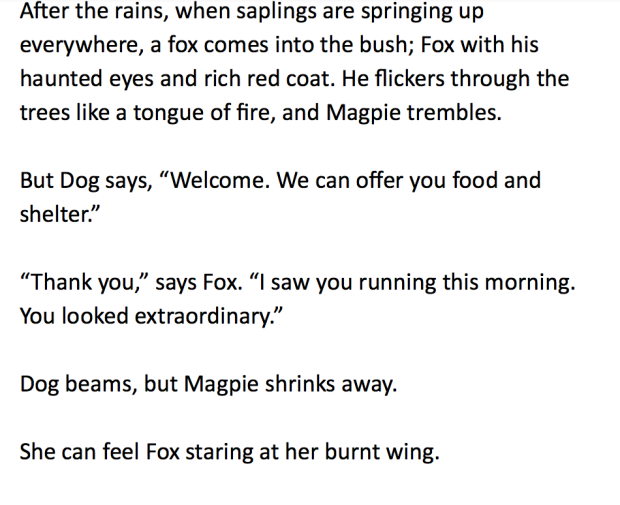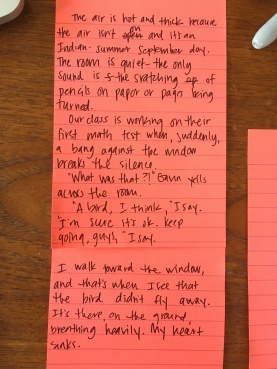like you, if you’re using the reading and writing workshop model, our reading and writing mini-lessons follow a predictable structure:
- connection
- teaching point
- teach
- active engagement
- link
when we were first learning how to teach in this structure, the “teach” part of the mini-lesson would always be modeling (demonstrating). we’d show our students what to do, and then they’d try the same thing during the active engagement.
after time with shana frazin at a summer institute at tcrwp, we began to be more intentional about varying our methods during the “teach,” and even put the different methods into our lesson plans so that we had to choose how, exactly, we’d be teaching each day.
this gives us the flexibility to choose the best method, which might vary depending on the teaching point or the students’ familiarity with what we’re doing or the time that we have. it also helps to ensure that our mini-lessons don’t feel too monotonous for our students because there’s some variety in how they’re being taught, even though the structure of the mini-lesson is predictable.
the three methods that we rotate through the most often during the teach are:
- model (demonstration)
- explain and example
- inquiry
this is the first post in a series of posts that will show how one teaching point can be taught three different ways. this means that the connection, teaching point, active engagement, and link could all stay (pretty much, if not exactly) the same, but that the teach part of the mini-lesson will change. this post will focus on modeling/demonstrating, and we’ll add links to the other two in this post as they’re published.
the teaching point we’ll use is: writers can reread a familiar text – a mentor text – and notice things that the author did to make plans for revision in our own writing.
we’ll use fox by margaret wild and ron brooks as our mentor text, a text we know well and love in our class. as always, when we use a mentor texts with our students, we’ve read it as a class as readers, just to hear the story, at least once.
we’ll write out how the teach might go in italics, meaning these are the words we could end up using in a mini-lesson, and will include portions of the text where appropriate to give a sense of how exactly it might look in a mini-lesson.
teaching point: today we want to teach you that writers can reread a familiar text – a mentor text – and notice things that the author did to make plans for revision in our own writing.
teach: i’m going to show you how this might go in my personal narrative story. the first thing i need to do is re-read a mentor text – i’m going to use fox – and notice a part that stands out to me as interesting writing. next, i’ll name what the writer is doing in that part. last, i’ll try it in my own writing, trying it in many different places as revision – adding to or changing the draft i’ve already written.
let’s look at this part here, when fox first arrives to dog and magpie:

watch me as i re-read this part, and notice something the writers do that really stands out to me…
hmm, i’m noticing this part here: dog beams, but magpie shrinks away. it seems interesting to have the characters respond to fox so differently – dog smiles, but magpie moves away. i think it’s interesting to have your characters react to the same thing so differently.
so i’ve re-read a part of a text i know, and noticed a part that stands out to me. i’ve done my best to name the writing work that’s happening there.
now, i need to try it in my own writing. i can do this as revision work since i’ve already written my first draft.
so remember the story i’ve been writing with you guys about the time when the bird hit our classroom window and it fell to the ground? i’m going to see what revision work i could do in that story using this strategy. here’s what i’ve written so far:

this is a draft we would have been writing alongside our students during mini-lessons. we’d probably quickly reread what we have so far to remind them, and we’d definitely have it displayed under the document camera.
let’s see…where could i try this, to add to or change what i’ve written…hmm, maybe this part here, i could say more clearly how different students reacted, thinking about how, in fox, the characters responded really differently. i might even use the word “but” to show the differences.
(we’d write this part as we think aloud in front of the students):
maybe it could go – nick says, “cool!” but connor gasps “oh, no!”
or – aloka stands up to see the bird, but allie covers her eyes at her seat.
(here’s a video of how the demonstration (above) part might look.)
do you see how i re-read a familiar text – a mentor text – and noticed a part that stood out to me? i named what it was the author was doing in that part, and then tried it in my writing in a few different places, adding to my draft so that it was revision work. this is work you can do in your own writing – make revision plans for yourself using a mentor text.
we’d likely continue on to the active engagement by having the students try the same work in another place in the story, which works because this story is a shared story (and even if it weren’t a shared story – one that the students had experienced with us – they would have seen us working on it so much and know the story so well that they could likely add to it with realistically imagined parts).
another option for the active engagement, or maybe in a small group to support students who would struggle with this independently, we might have them look at another part of fox (or a different mentor text of their choosing) and name writing work that they notice. we’d likely not have time to do that in addition to trying it in our own writing during the active engagement, so deciding what your students would benefit more from – practicing identifying and naming writing work OR trying the writing work in a shared draft – would be important when planning for this mini-lesson.
2 thoughts on “varying mini-lesson teaching methods”